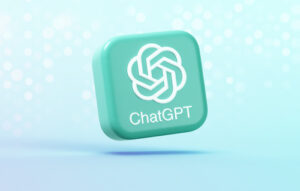Each year, we share our 10 most-read stories. Not surprisingly, many of this year’s Top 10 focused on generative AI, adult learners, and higher-ed trends. This year’s 7th most-read story focuses on why ChatGPT was just what higher ed needed.
Since its launch in November 2022, ChatGPT has dominated conversations in the media landscape and within the education industry. A key conversation focuses on weighing its benefits versus risks, and many higher-ed institutions have been quick to implement bans on the technology altogether for fears of plagiarism in written works. But is this the right course of action to take?
As technology evolves, industries must evolve alongside it, and education is no exception – especially in an era where students heavily and regularly engage in technology and its applications. Instead of being afraid of the unknown, educators and leaders should navigate these changes with curiosity and an open mind and embrace the shake up the education industry has been waiting for. ChatGPT can be the answer we’re looking for in our search for the ideal, personalized student experience–and ultimately student success.
ChatGPT as an innovative pathway
For students and educators alike, allowing for creativity in new types of learning in the classroom should always be encouraged. In a structured classroom setting, an educator can only be expected to teach a certain amount of curriculum, and learners can only retain so much information at one time. By harnessing the power of technology, learners can access a broader understanding of a topic, mitigating the structural bias of the institution and curriculum.
Utilizing technology–which generates perspectives aggregated from myriad sources–allows for an expanded understanding of a certain topic or theme, which was initially seeded within the four walls of the classroom, but now can be encouraged and further explored with support from platforms like ChatGPT.
Take, for example, a lesson plan on the War of 1812. A professor or educator can spend a lecture or semester teaching the curriculum, but if you ask ChatGPT what the biggest takeaways from the war are, it’s possible and likely a learner is provided with even more context and historical facts via the chatbot than what is possible for an instructor to cover from a set curriculum. Is this a problem? No–not if we’re viewing it as a lens to further support learning and broaden the scope of topics that can be covered. As educators, we are trying to light that spark of curiosity that will ignite a fire of lifelong learning. ChatGPT provides that adaptive capability to teach content, but at the learners’ interest to supplement the instructional direction.
Shifting the conversation
When ChatGPT was first released, questions swirled around higher ed about it stoking an increase in plagiarism, promoting a lack of critical thinking, and what the future would hold for classic functions like the college admission essay. If we go back to the War of 1812 lecture example, we can see the value of adaptive learning if we instead embrace these tech advancements. Instead of thinking about ChatGPT spitting out the answers about the biggest takeaways from the war and assuming the learner is using the tool for the sole purpose of plagiarism, we need to shift the thinking to how it can reignite curiosity in the curriculum. If one of these bullet points is different from what the learner may have originally come up with, there’s a new intrigue of the history and subsequent understanding of it, opening a new avenue for continued learning and interest.
In education, it’s about getting to the same point on the mountain, no matter where the learner starts. In this case, whether pulling insight specifically from a lecture or digging deeper into the curriculum with additional insight from ChatGPT, the learner is still understanding, analyzing, and writing the assignment. Educators can meet students where they are in viewing the tool with curiosity and encouraging it as a supplemental effort to their overall learning journey.
Looking ahead
As technology continues to evolve, the education industry has immense opportunities to harness these new applications. Thinking back, Wikipedia was the previous version of ChatGPT, assembling information more quickly and with limited control or monitoring from educators. This created a depth of knowledge at the click of mouse, which has become a valued resource for learners of all ages. This accessibility can provide different perspectives than those available within the classroom text and gives the curious mind the ability to decipher for themselves what is most valuable. Let’s face it–there will certainly be something to follow ChatGPT, just like there will undoubtedly be tools to ensure plagiarism is not the new norm. It’s imperative to start evaluating our tech stacks differently as a part of the learning journey–standardized academic assessment is not the only measure of success.
Creating personalized experiences for each learner is key. With this change to embrace advancing technology comes new opportunities for educators and students alike to create a better experience. Taking into account analytics skills, social and emotional learning, and importantly, the human experience, will always remain its cornerstone. ChatGPT is only one example of how educators and learners can start to analyze and shift grading practices, allowing for more curiosity and interest in the industry. It’s time to embrace the shakeup education has been waiting for and use the technology as a stepping stone to reimagine what success and experience looks like within education.
Related:
3 academic leaders weigh in on ChatGPT’s place in higher ed
The benefits of observational assessments in a ChatGPT world
For more news on AI in higher ed, visit eCN’s Teaching & Learning page

